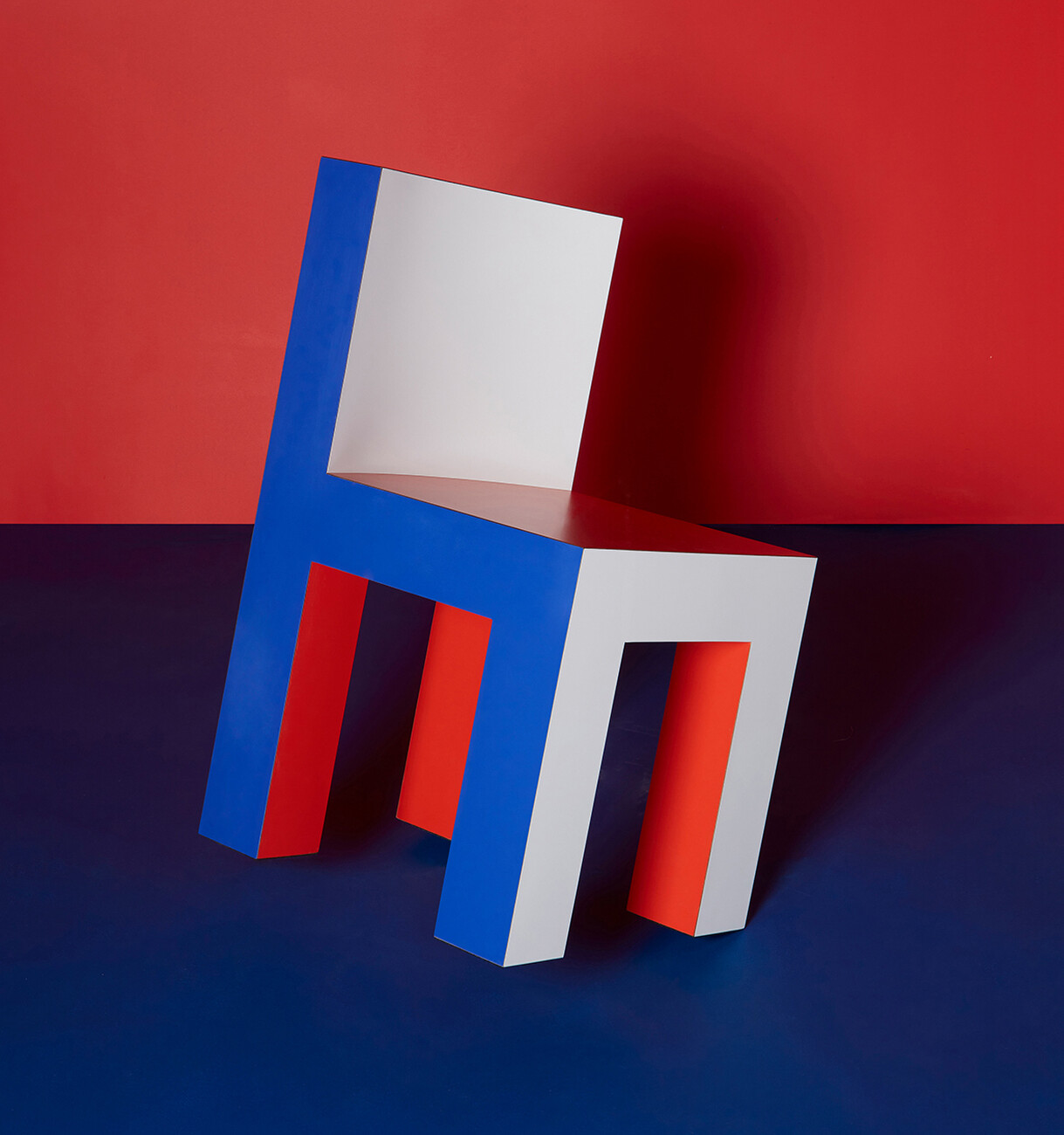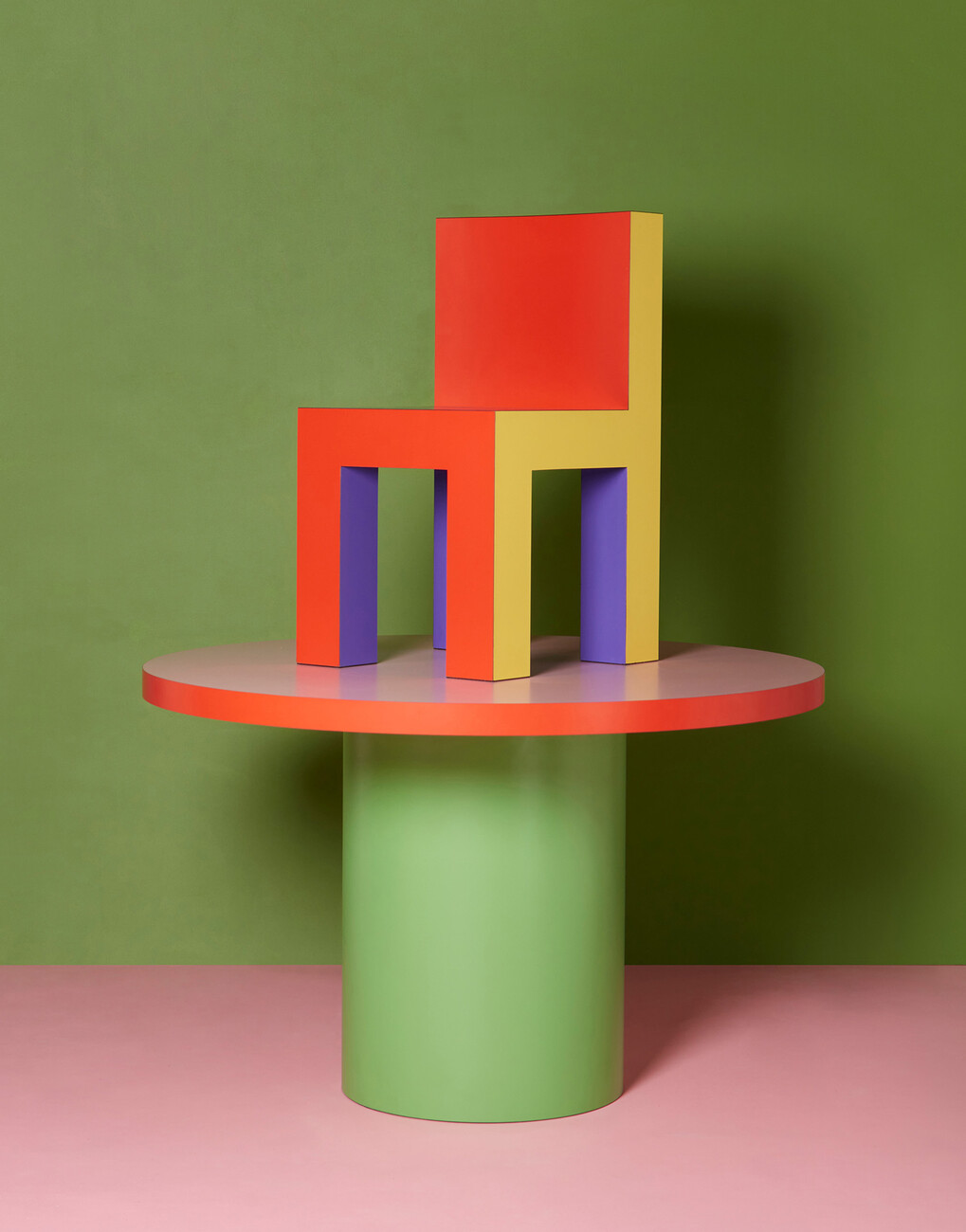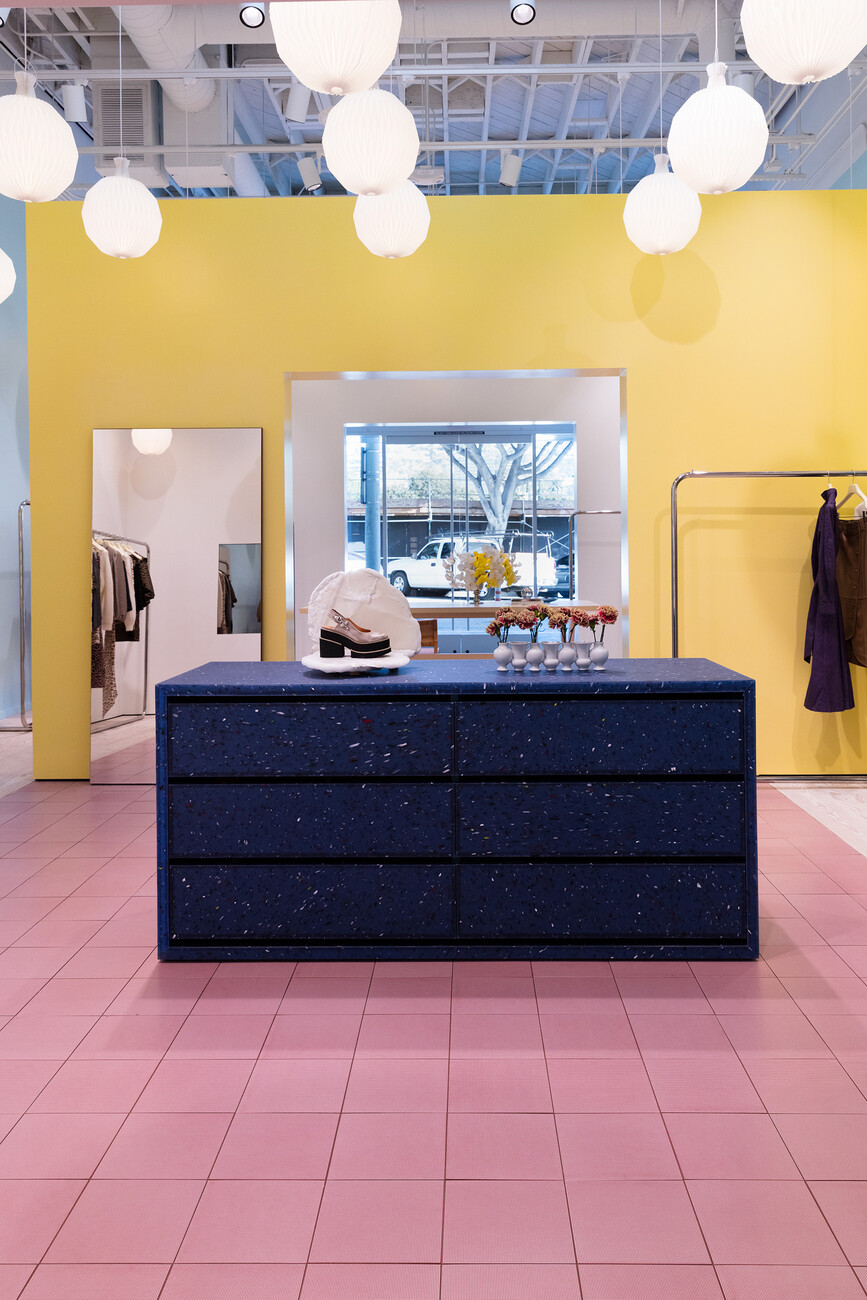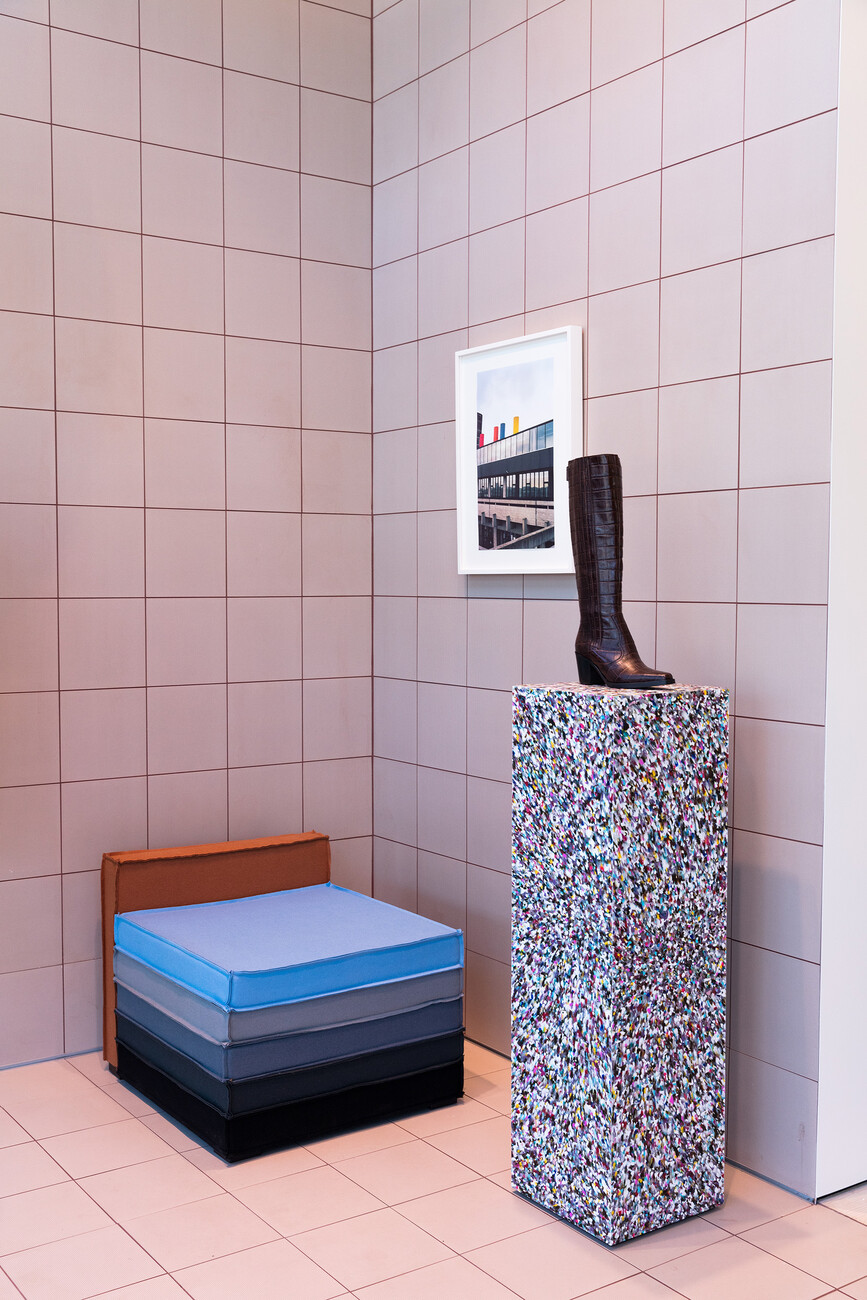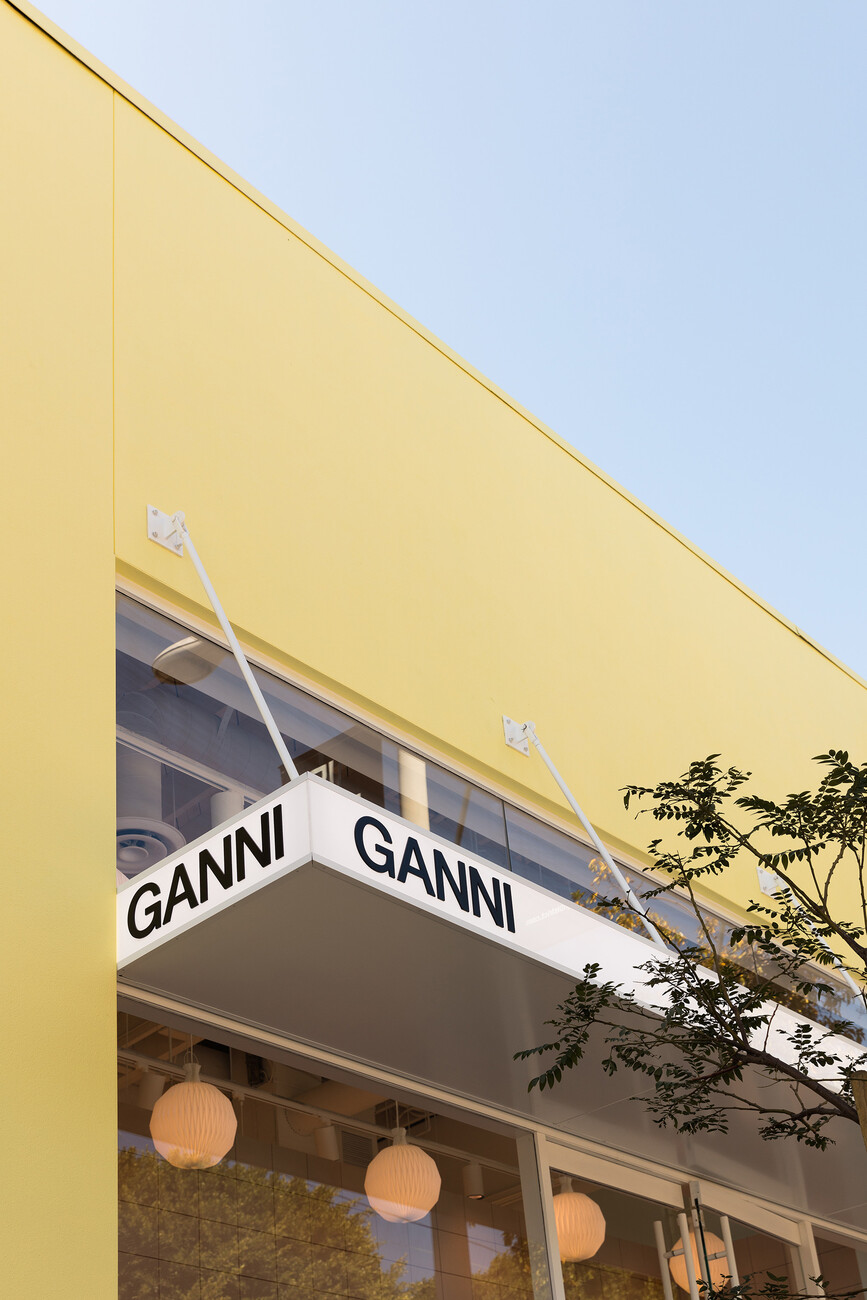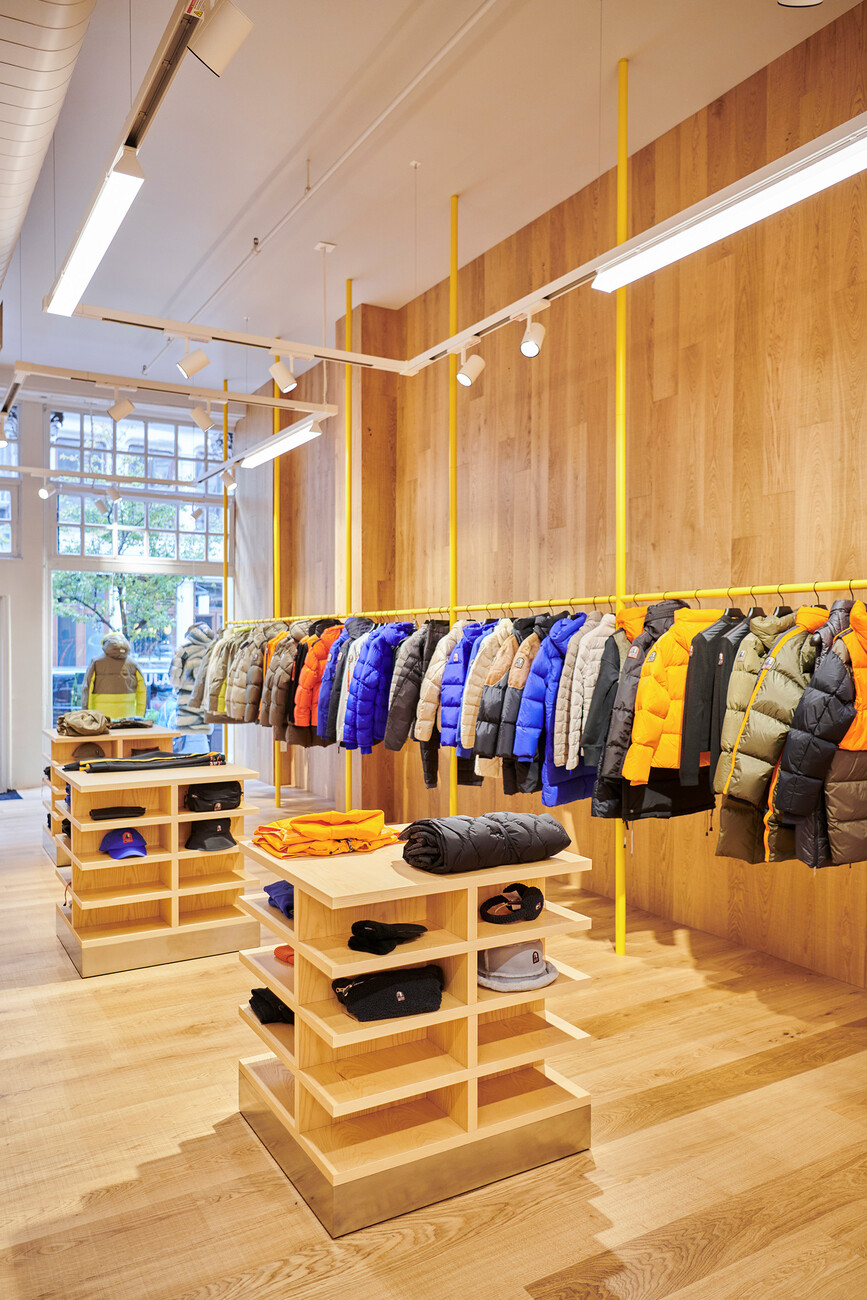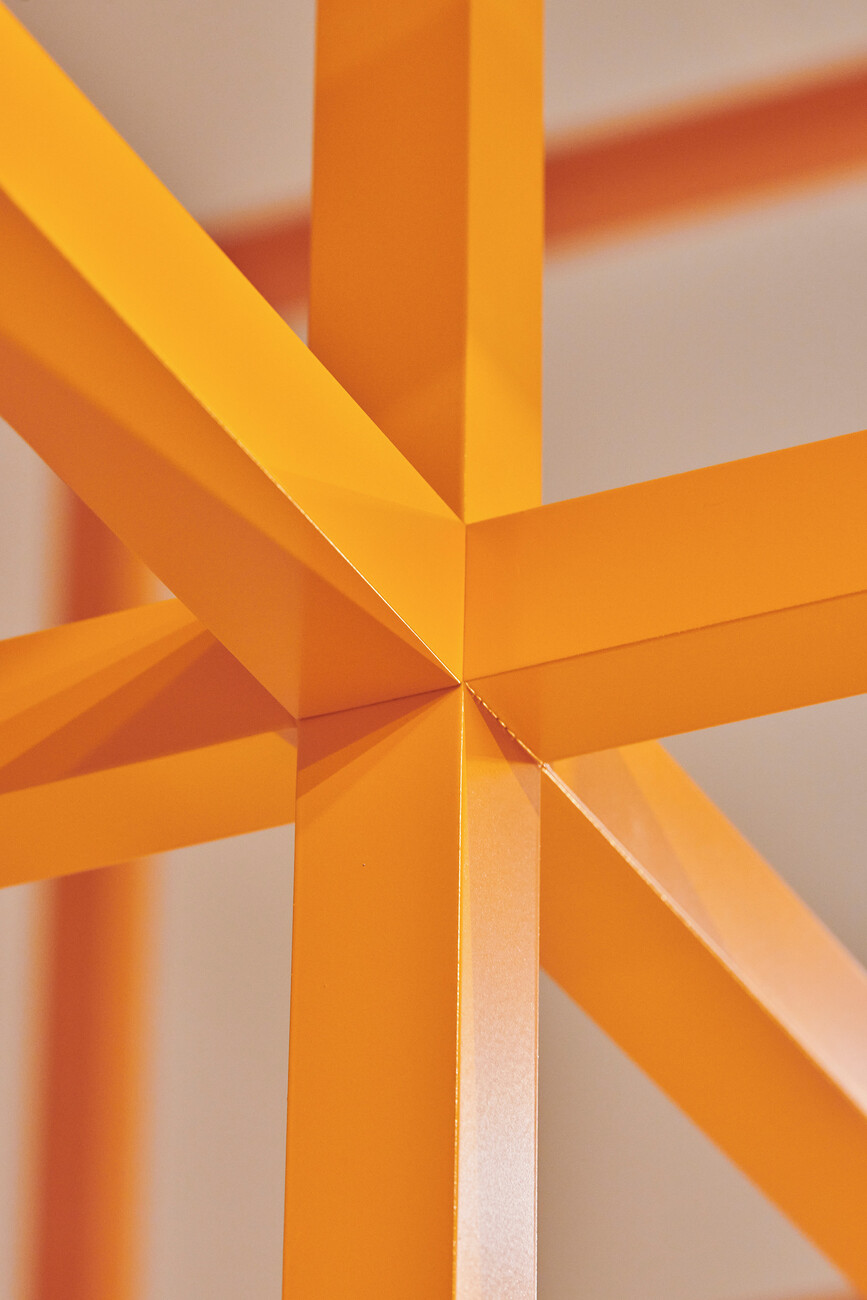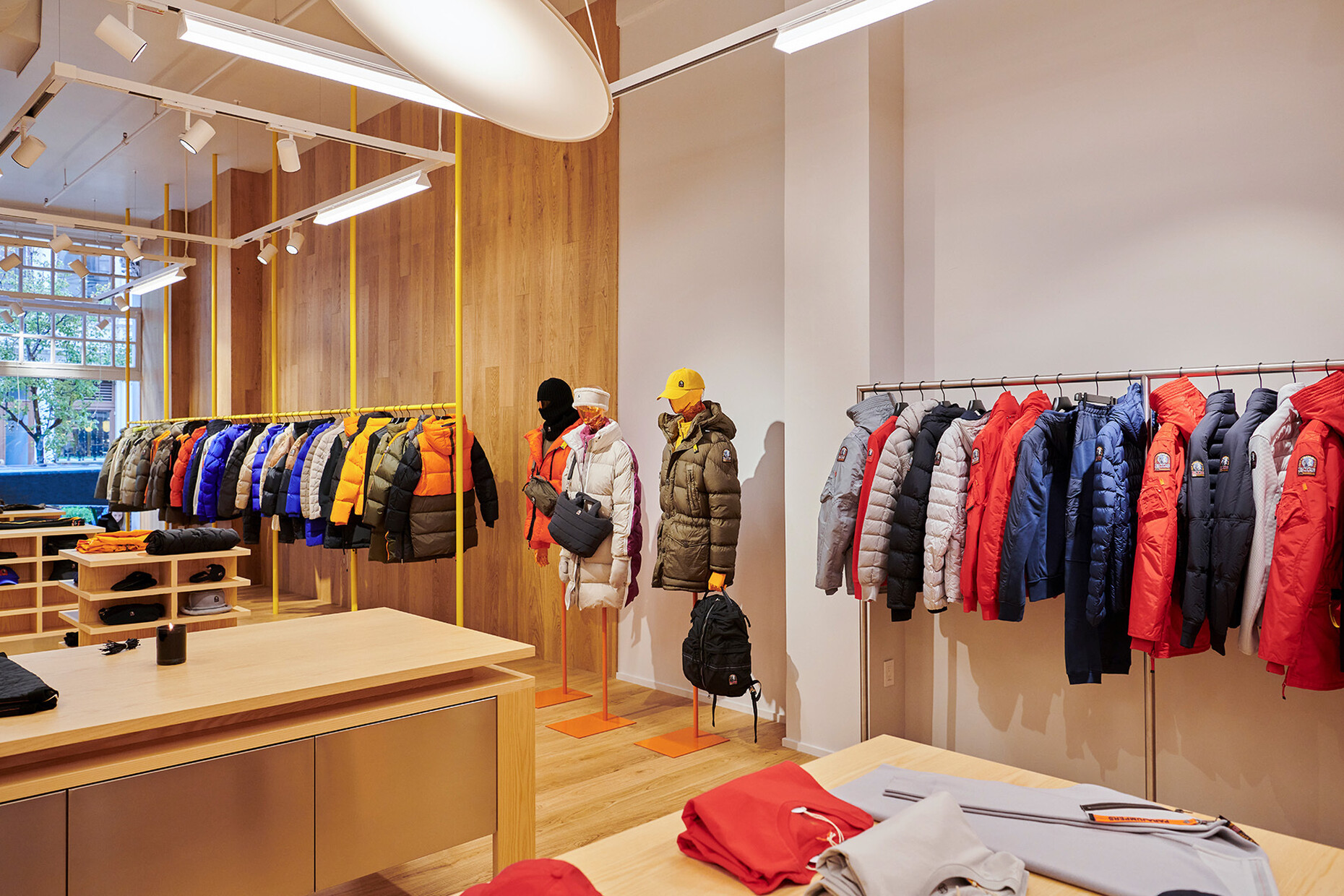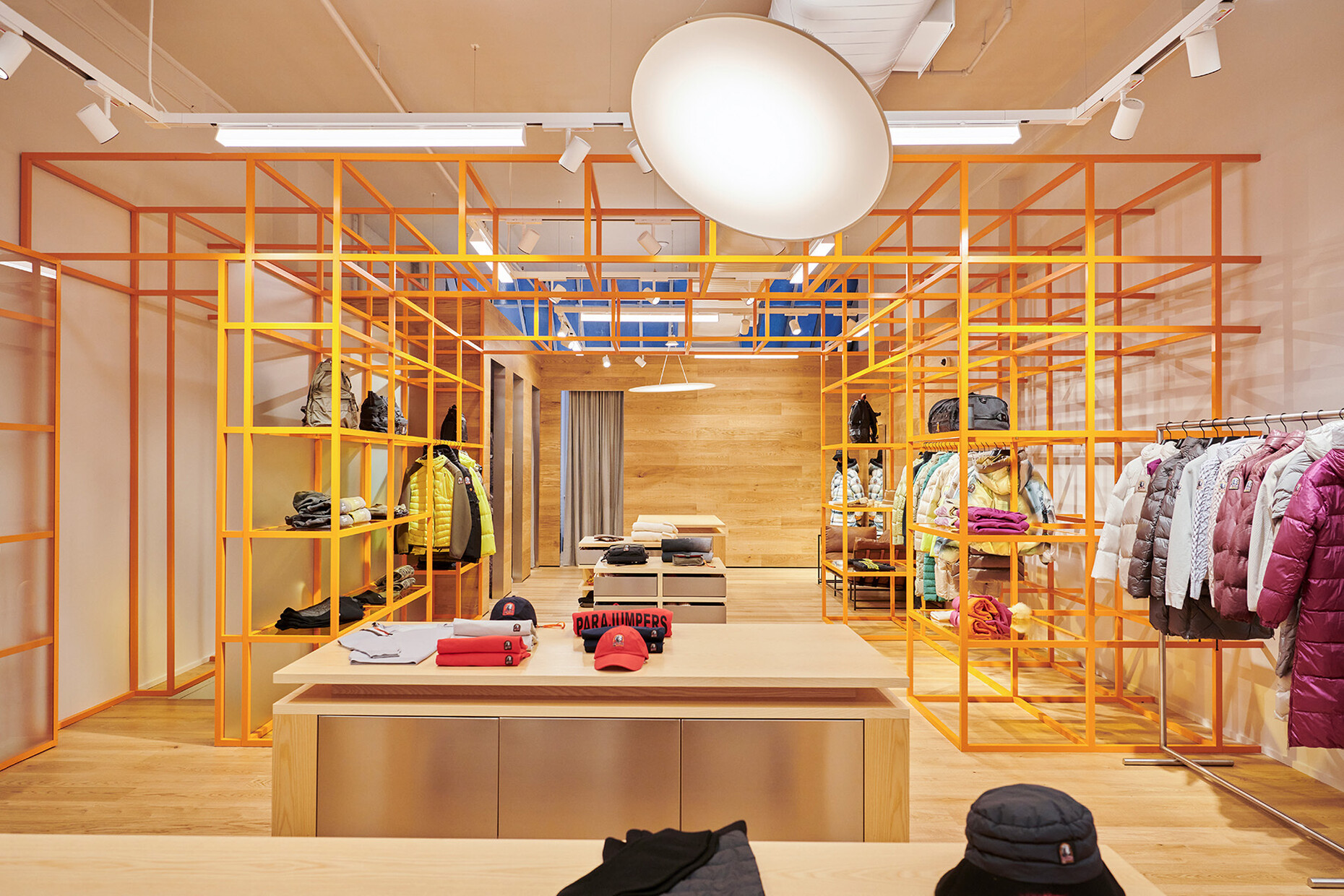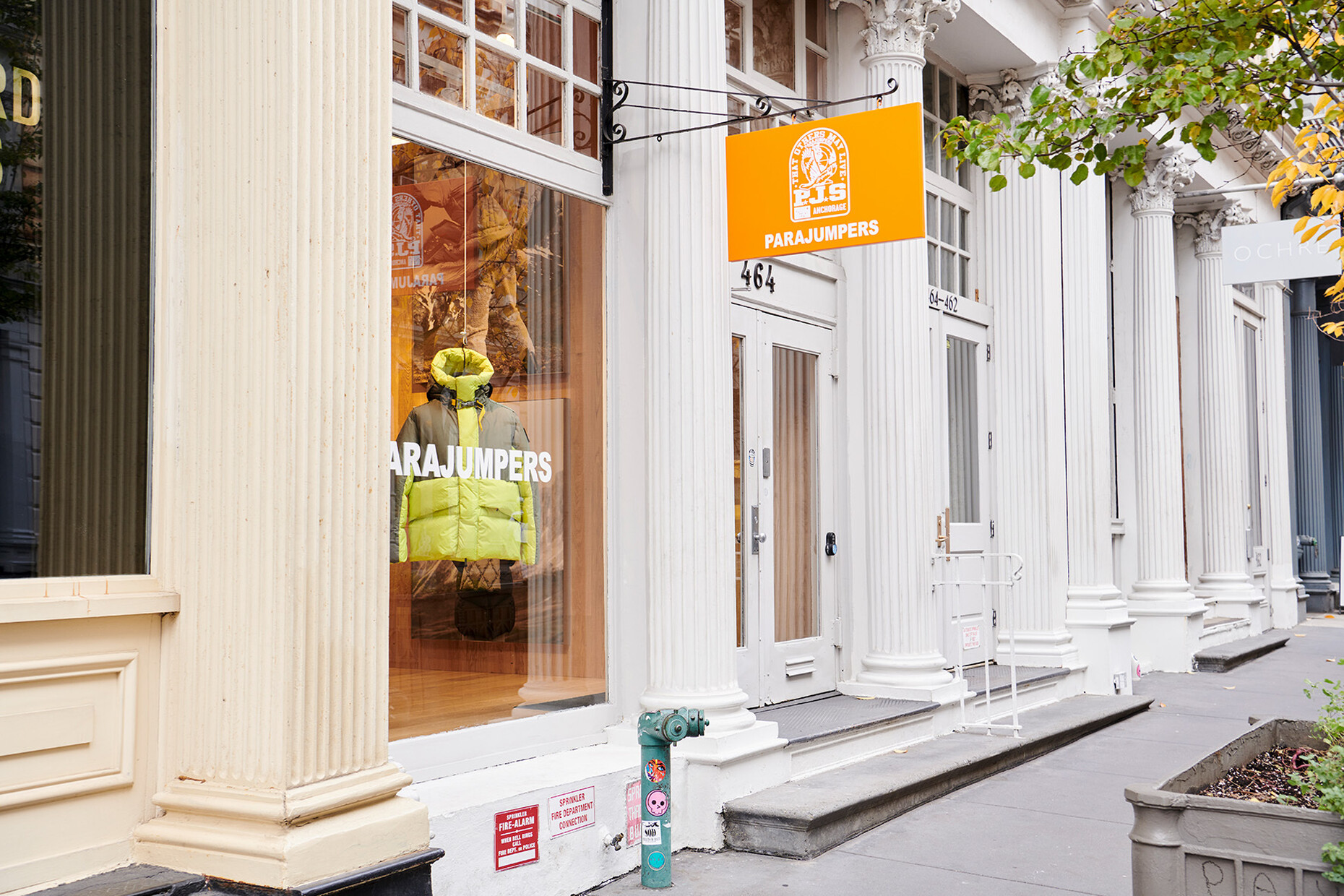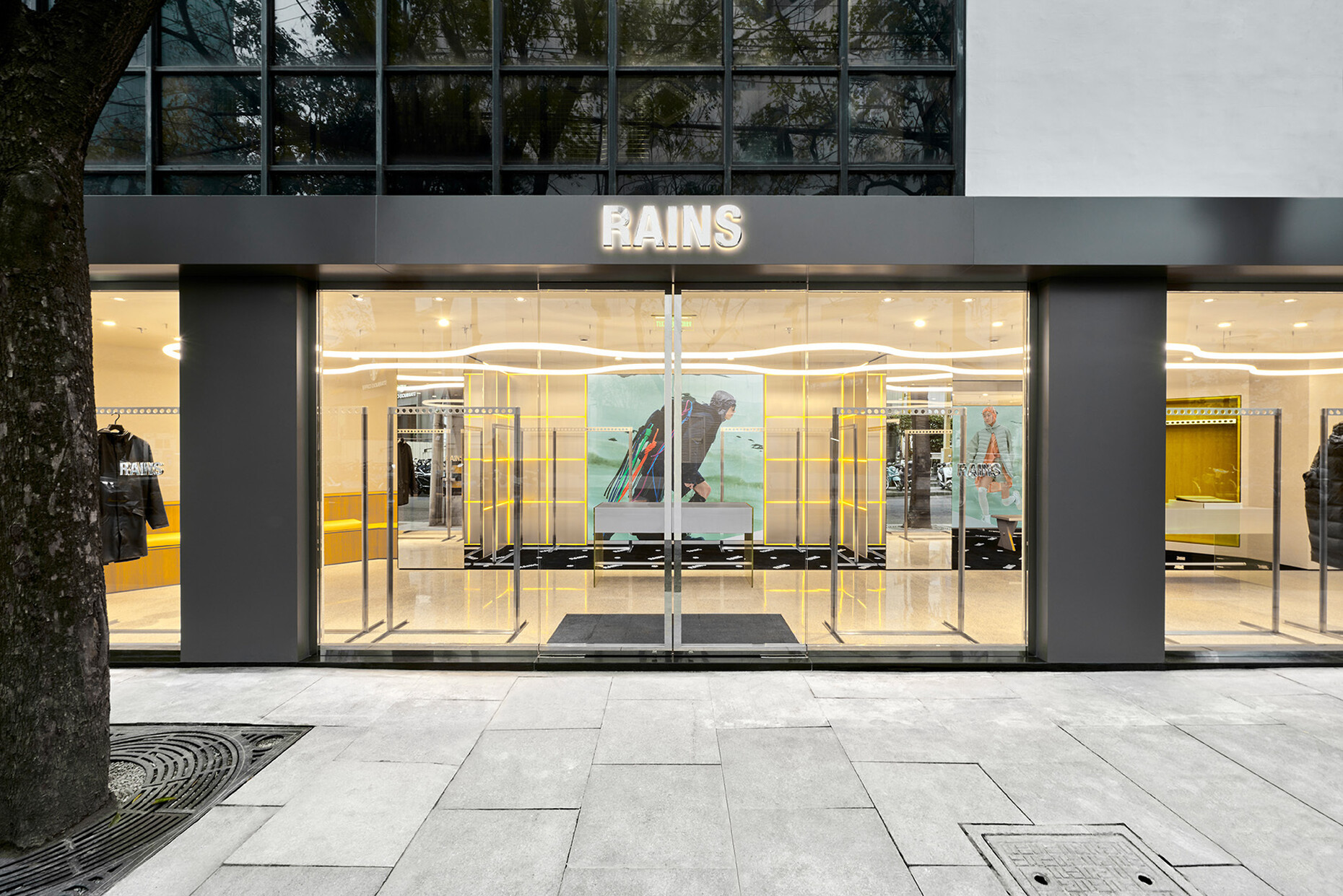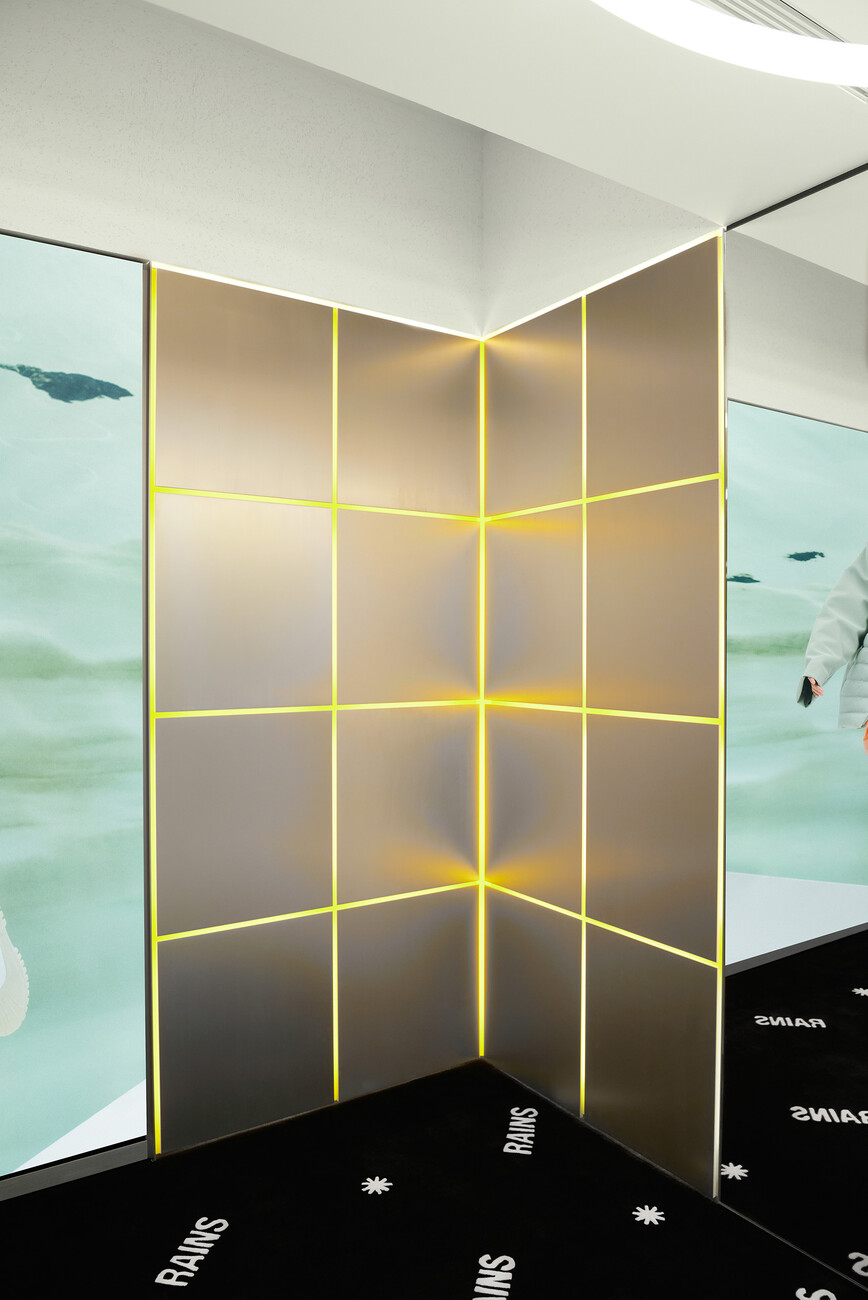Colour, not decoration
Katrin Spohr: You design interiors for fashion labels such as Acne Studios, Alexander Wang, Ganni or By Marlene Birger, but also for the lighting manufacturer Louis Poulsen. You have also recently started designing your own furniture. What was your entry into the design world like?
Emanuele Stamuli: I graduated in naval architecture from the University of Genoa. My first job was with the Italian manufacturer Azimut, where I worked on the interior design of yachts. After that I collaborated with brands like Prada, Fendi and Acne Studios in shop design and technology until I started my own office in Stockholm in 2016. My sister Francesca, who is an architect, became my partner and co-owner.
How is Stamuli AB structured?
Emanuele Stamuli: We are designers, architects and project managers, about 20 employees in total. In addition, we have a dependence in Rome with 3-4 employees. Since 80 to 90 per cent of our work is with fashion brands or in the commercial sector, this reliable structure is necessary. We strive for the best quality.
How come an Italian architect has an office in Stockholm? Generally, designers and architects are more attracted to Italy, aren't they?
Emanuele Stamuli: That is so true! It just happened. I was intrigued by this up-and-coming, cool fashion brand, Acne Studios, which was looking for a project developer, and got in touch with the CEO, who is now a good friend of mine. Acne Studios hired me. That was in 2014. I moved to Sweden and was employed there for two years. But actually I always wanted to do my own thing. So I founded Stamuli AB and suggested Acne to be my first client. So I stayed in Stockholm. I met my wife, she is Swedish. We have a child. Stockholm is my home now. And on holidays I go to Italy!
Your portfolio is very diverse. What are you currently working on?
Emanuele Stamuli: There are around 40 projects worldwide. Among them are stores for Alexander Wang, Ganni, By Malene Birger, Parajumpers and Dion Lee. In the south of France we are currently building a house for one of our fashion clients: This will involve a wall construction inside the mountain – one of the best projects in recent years. We are developing concepts for the stores of Tiger of Sweden. A new corporate client is the Italian shoe brand Ecco, which is launching a rebranding for 3000 shops worldwide. There is also a new Polish fashion brand, Magda Butrym. It's still in its infancy, but it's already very successful. We are designing her first ever shop, a beautiful boutique in the centre of Warsaw. Many exciting, up-and-coming fashion labels are approaching us - We are also designing two new Louis Poulsen shops, one in Milan, the other in Miami. We presented our furniture for Fuorisalone during the furniture fair in Milan and we also want to participate in the 3daysofdesign in Copenhagen.
Your furniture pieces became internationally known through the presentation at the "Edit Napoli" design fair. Here your chair "Unstressed" made of bent aluminium directly won the "Edit Napoli Awards". What is the story behind this chair?
Emanuele Stamuli: Actually, we worked for our client Alexander Wang. During this process we experimented with aluminium and steel and explored the plasticity of metal. Alessandro, one of our architects, and I tried to build jigs that bend the material as if it were soft. We were thrilled with the result! So why not design a stool or a chair like that? That's what we did.
The Tagadà furniture collection was also much noticed. It consists of tables, chairs and mirrors and is kept in bright colours. It is said to be influenced by Memphis design.
Emanuele Stamuli: Basically, we are very much inspired by the Italian artist Franco Summa. And of course by the geometries of Donald Judd, also a very important reference. Judd is appreciated by many of my fashion clients. So I have developed an interest and a great appreciation for Donald Judd.
And what impresses you most about the Memphis Group?
Emanuele Stamuli: Ettore Sottsass is one of my idols! However, there is a remarkable difference between the Memphis design and the design of the Tagadà collection: Memphis is a bit more funky, more decorative. Our furniture has no decoration, just colour. We achieve this with the coloured laminate surfaces from Abet Laminati. If you took a black and white photo, it would be the most minimalist furniture ever. I find the Tagadà collection rather rationalistic. In the style of Adolf Loos, who is an important reference for me: a building by Adolf Loos looks rather plain, simple from the outside. The interior presents perfection down to the smallest detail, through the texture of the materials, the colours, the design of the wallpaper patterns.
How did you go about designing the Tagadà collection? Did you initially have the furnishing of an entire ambience in mind?
Emanuele Stamuli: We originally developed this style for our client Ganni, a Danish fashion brand. Ganni was looking for a special look that could be described as: Danish inspired by Italian. The round table in the collection was originally designed for the Ganni canteen in Copenhagen. Ganni then bought many of them. That's how it started with Tagadà.
You include sustainable, recycled and forward-looking materials in your designs. What is your favourite material?
Emanuele Stamuli: Good question! I don't have a favourite material. My criterion for selecting materials is their origin. With all the current problems we have with the ecological footprint, I only use ethically correct, regional materials. This attitude also corresponds to the idea of the 'genius loci', which was the basis for the construction of temples by the ancient Romans. It is about protecting the identity of a place: before you build in a certain place, you first trace its identity. This means for our work: when I design an interior for a house in Sweden, I first establish a connection to the place where it is or will be built. I visit that place, I use local materials – the limestone from Gotland, the granite from Varmland, the limestone from Norrland, the pine, the birch et cetera. Brazilian Azul Macauba marble for a small toilet - a no-go!
What are your thoughts on the subject of sustainability otherwise?
Emanuele Stamuli: For me, the biggest problems are the consequences of logistics. Italy, for example, is a country that produces many things. If a lorry drives from Bari to Milan instead of from Monza to Milan, 200 litres more diesel exhaust alone end up in the environment. That is a remarkable difference. It is important to use the region and the people who live in the region. And to pay appropriately!
You say you have a rationalistic approach to design combined with a passion for detail. Can you elaborate on that?
Emanuele Stamuli: My background is in naval design. Designing yachts has been one of the most valuable experiences of my career so far: there is nothing more complicated than building a yacht. The quality requirements are incredibly high, down to the smallest detail. And I always take that with me. So I really know how furniture, interiors have to be designed and worked out, at the highest level. So we always demand that project management is also part of our job, because that way we can keep control over the quality. I firmly believe that projects that are poorly executed never really blossom! It is the execution that ultimately makes projects excellent, not just the design drawing. Unfortunately.
Do you think that the demands on project designs have increased in general?
Emanuele Stamuli: An example: 50, 60 years ago, many people never saw the inside of a beautiful hotel, let alone visited it. Our lifestyle has changed: The current generation is very sensitive to design and details just through all these Instagram and Pinterest posts. People are browsing the internet and looking for references. I don't like that, but at the same time it has brought a good amount of style with it. They are more aware of what is beautiful today. You can also see it in the way they dress. They know what the interior quality of a four-star hotel should be like.
The "Edit Napoli" fair focuses on the "designer-maker" who questions traditional production and distribution chains. How do you see the future of furniture design?
Emanuele Stamuli: There are two categories: On the one hand, furniture designed for the mass market. I'm not talking about that, because I'm not familiar with it. For the other furniture, the price will increase significantly because production will be more and more local. There will be no more storage. The furniture will be made-to-order, within two to three months. So if you pick out a chair for 1000 euros and you know you're going to be waiting weeks for it, that in turn affects the way people approach their furniture research: The search will be less instinctive and emotional, but more serious and selective. There is also a growing market for vintage and second-hand furniture. Auction houses will blossom. Which is a bit sad.
What is unfortunate about furniture being sold in auction houses?
Emanuele Stamuli: I have the feeling that auction houses are currently benefiting a lot from the fact that you can't really buy new things these days. In Sweden, there is an auction house on every corner. I have a greater appreciation for art galleries. I come from Italy, a country where there are galleries everywhere!
What is your design process like?
Emanuele Stamuli: First of all, it's about a deep understanding of the customer's needs. Take Alexander Wang, for example, this 39-year-old talent: he always has a very clear idea of what he wants. So we have to make sure we understand him. Another example: the summer house in the south of France. Here it's about filtering out what exactly this summer house means to the client. I like to discover the codes of a region, the materials. And ask: How can I crack the proven code, in this case that of the South of France? This process leads to Stamuli designs that are considered modernist, eclectic, but also a bit "off".
Last year you exhibited your furniture together with the label New Tendency at Andreas Murkudis in Berlin. How did that come about?
Emanuele Stamuli: I knew Andreas because I designed the Acne Studio store next door on Potsdamer Strasse. Later we met again at "Edit Napoli". Murkudis liked the Tagadà collection. We started to develop a vision of how the furniture could be presented in his showroom. And that's how we realised this small interior. It turned out very nice!
What are the challenges and opportunities of working in Sweden compared to Italy?
Emanuele Stamuli: In Sweden, for example, it is much more difficult to recruit architects because there are far fewer who work in the fashion industry. And southern Europeans don't want to move to Stockholm because of the weather. The chances are that the Swedes are very honest, so it is safer to do business here than in Italy.
A project you would like to realise in the future?
Emanuele Stamuli: I would like to design a beautiful playground with different shapes and geometries and use wood and concrete to create various games and equipment.
